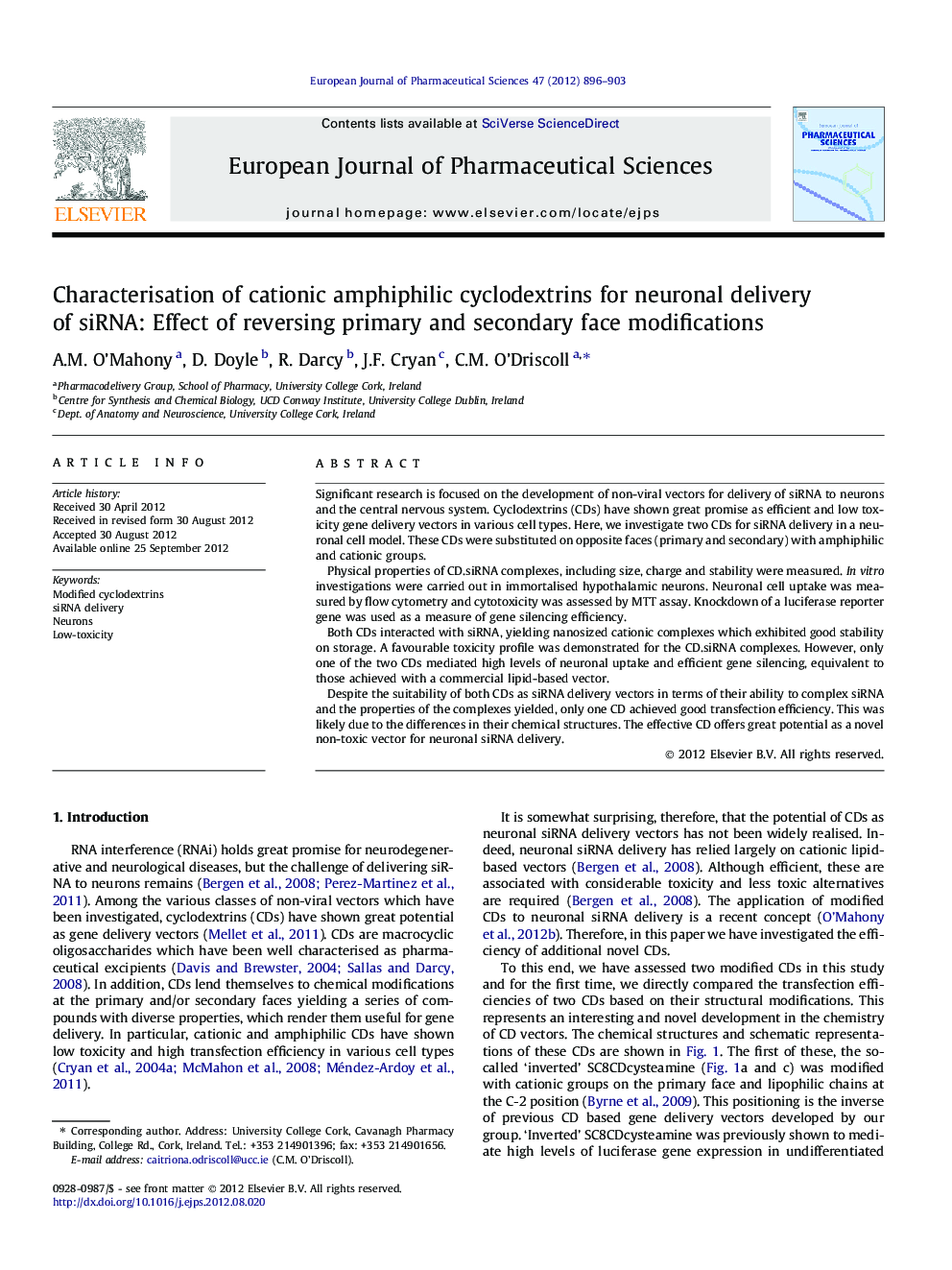| Article ID | Journal | Published Year | Pages | File Type |
|---|---|---|---|---|
| 2480799 | European Journal of Pharmaceutical Sciences | 2012 | 8 Pages |
Significant research is focused on the development of non-viral vectors for delivery of siRNA to neurons and the central nervous system. Cyclodextrins (CDs) have shown great promise as efficient and low toxicity gene delivery vectors in various cell types. Here, we investigate two CDs for siRNA delivery in a neuronal cell model. These CDs were substituted on opposite faces (primary and secondary) with amphiphilic and cationic groups.Physical properties of CD.siRNA complexes, including size, charge and stability were measured. In vitro investigations were carried out in immortalised hypothalamic neurons. Neuronal cell uptake was measured by flow cytometry and cytotoxicity was assessed by MTT assay. Knockdown of a luciferase reporter gene was used as a measure of gene silencing efficiency.Both CDs interacted with siRNA, yielding nanosized cationic complexes which exhibited good stability on storage. A favourable toxicity profile was demonstrated for the CD.siRNA complexes. However, only one of the two CDs mediated high levels of neuronal uptake and efficient gene silencing, equivalent to those achieved with a commercial lipid-based vector.Despite the suitability of both CDs as siRNA delivery vectors in terms of their ability to complex siRNA and the properties of the complexes yielded, only one CD achieved good transfection efficiency. This was likely due to the differences in their chemical structures. The effective CD offers great potential as a novel non-toxic vector for neuronal siRNA delivery.
Graphical abstractFigure optionsDownload full-size imageDownload high-quality image (108 K)Download as PowerPoint slide
